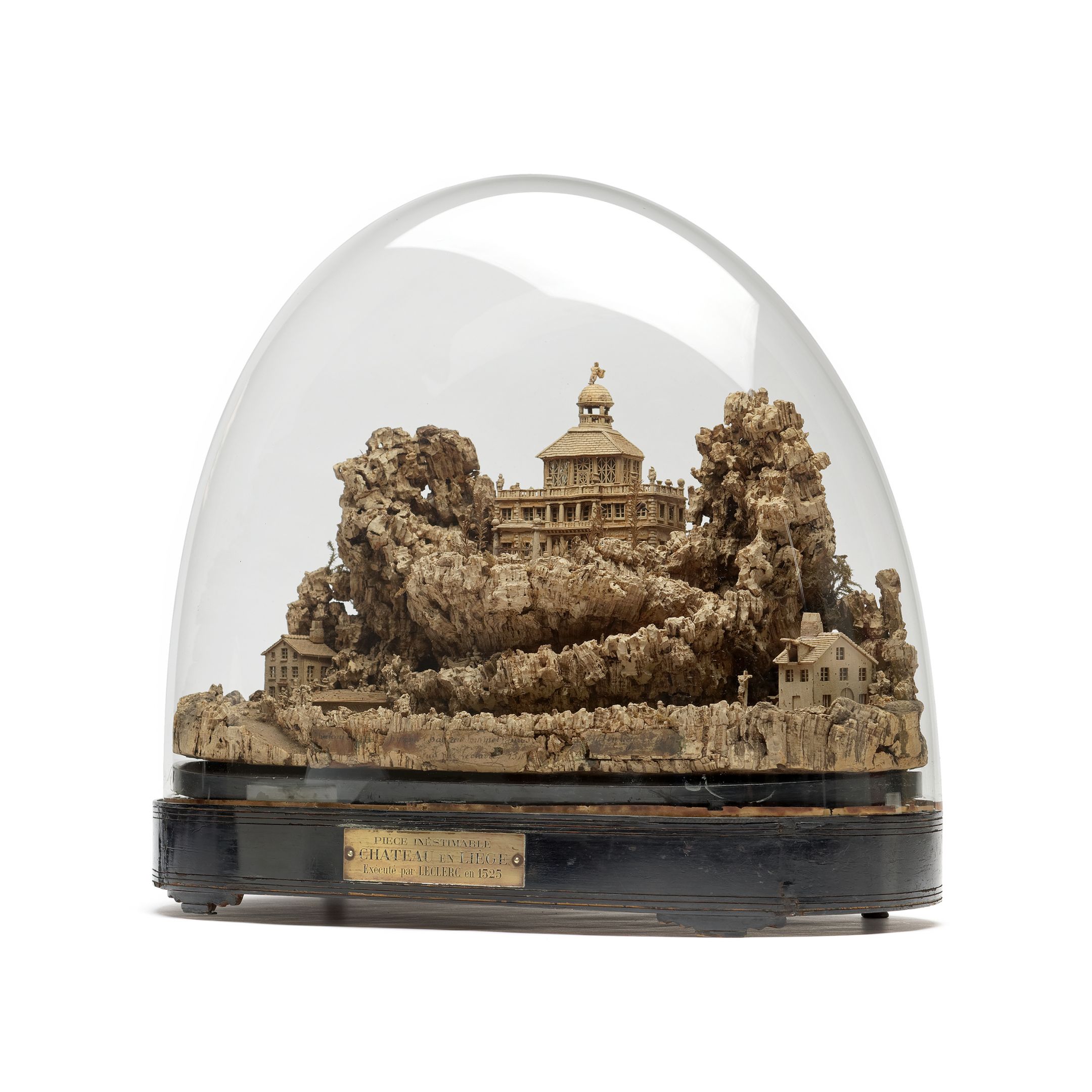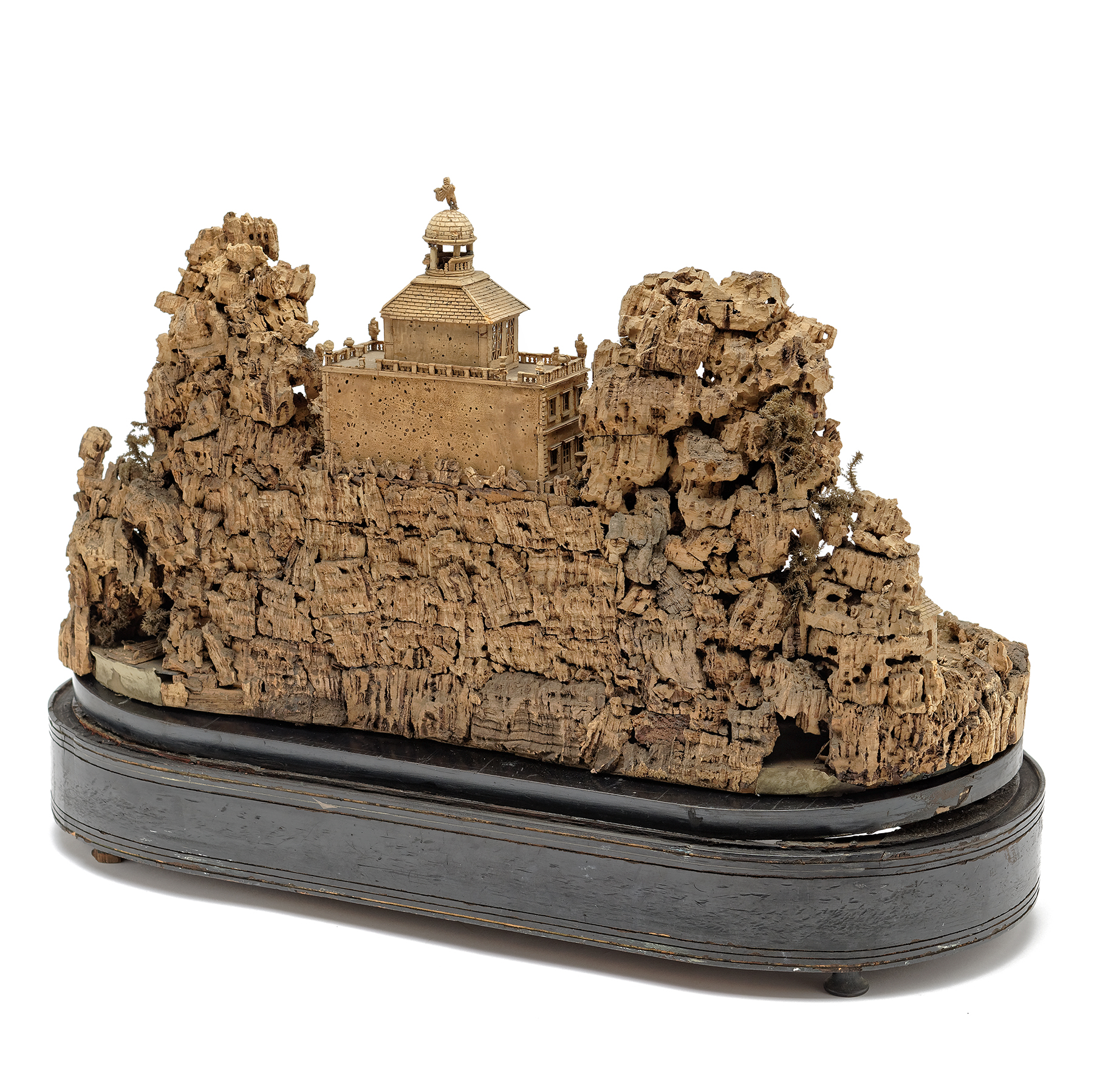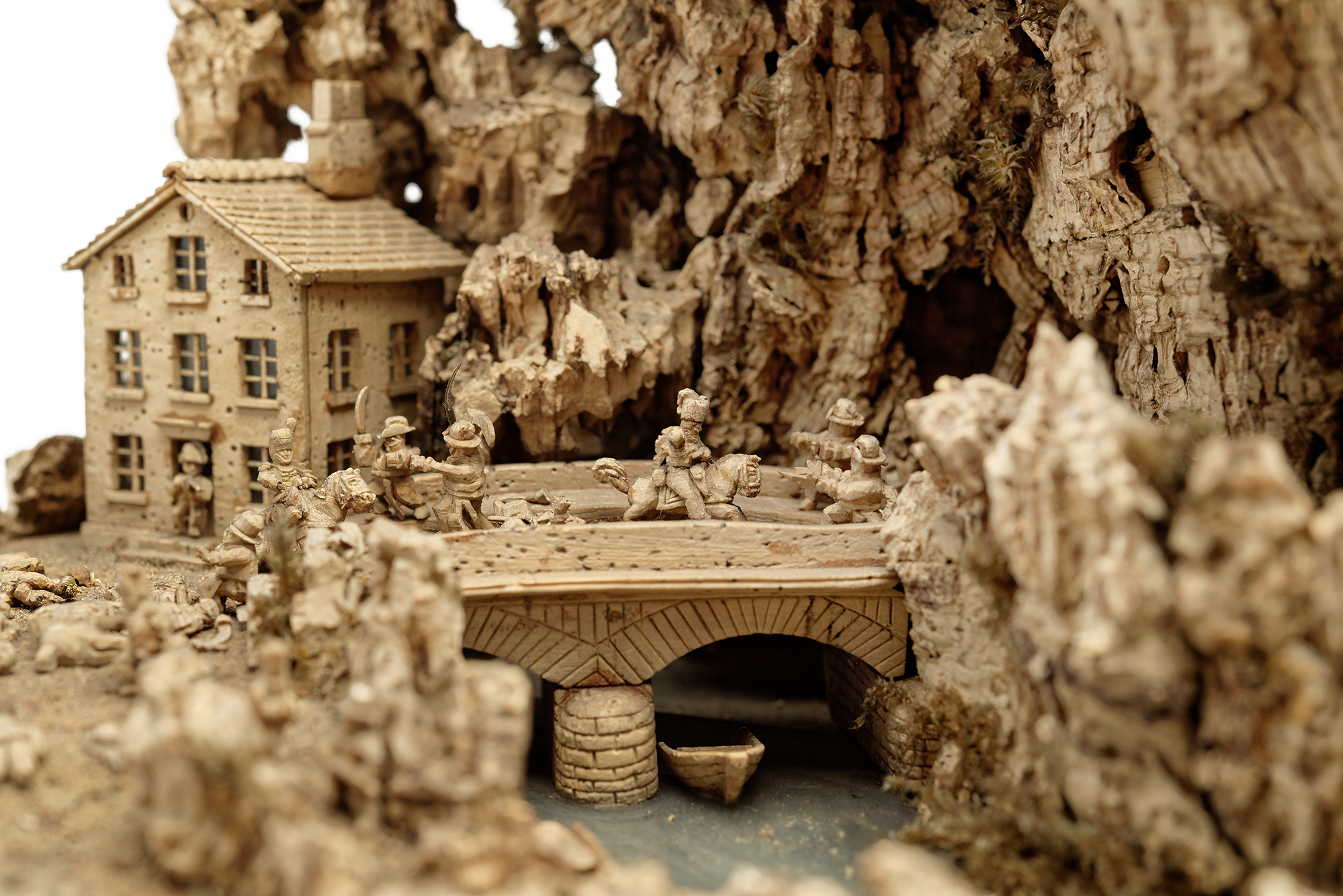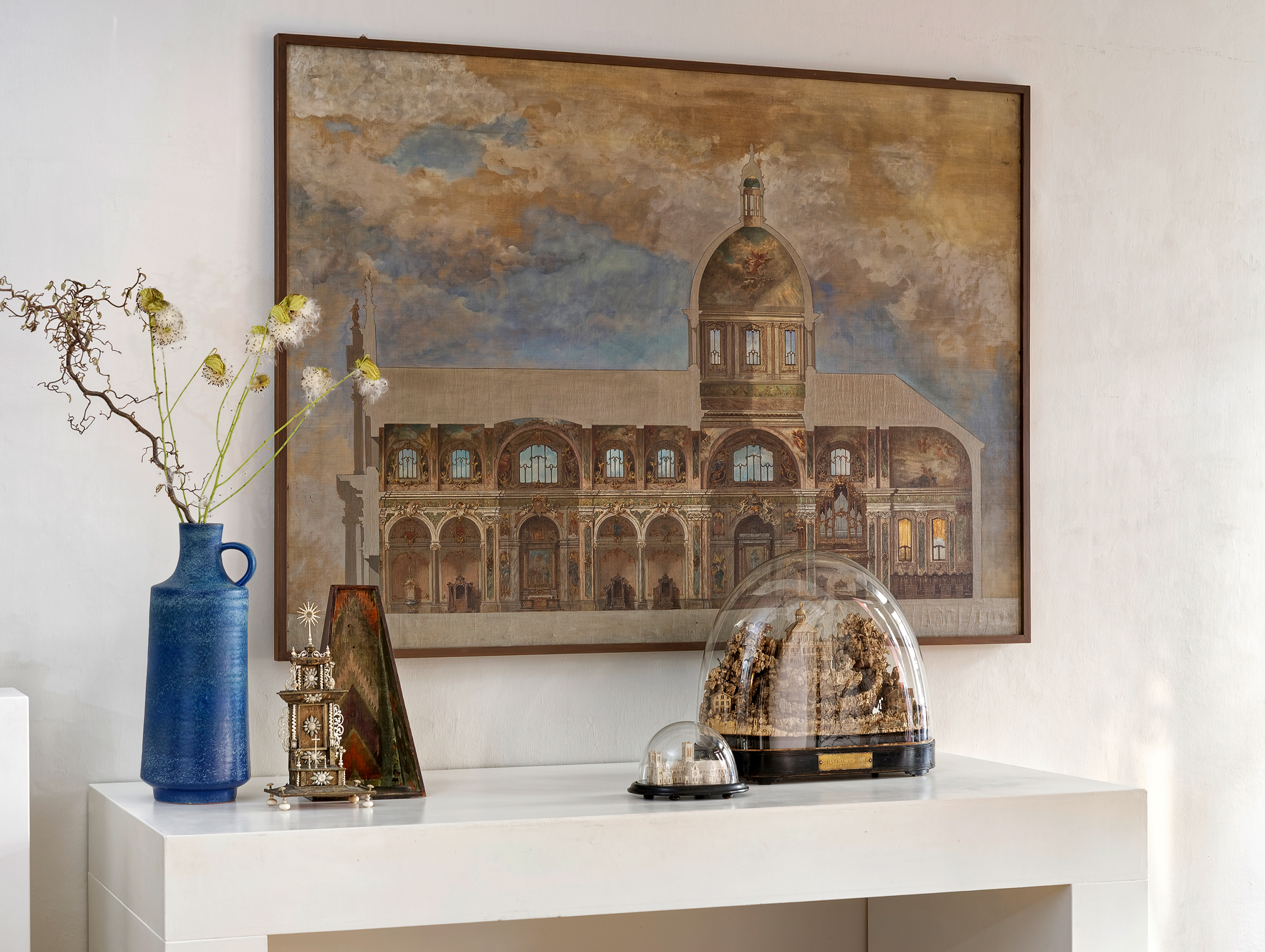Cork Model
French, 18th century
Cork, wood, glass, paper
H 55 cm w 60 cm d 29 cm
Please contact us for further information!
A castle in a landscape, besieged by soldiers in the middle of battle. They shoot or run, lie wounded, others flee in a carriage, are immersed in prayer or steer a raft past a mill - all en miniature. Together they are the protagonists of this very rare cork model, which is characterized by its complex design and unusual topic. Phelloplastics of the late 18th and early 19th century usually show ancient buildings and ruins, not contemporary castles or even battle scenes.
The present model also convinces through its quality and craftmanship: fine carvings, executed in the difficult, porous material, bear witness to the skill of its creator. The technique of phelloplastic originated in Italy in the middle of the 18th century as an idea to reproduce ancient buildings in cork. The successful combination of motif and material was a decisive factor in the success of these surprisingly lifelike and often archaeologically accurate models. To this day, probably the most famous phelloplastic artist is Antonio Chichi (1743-1816): he produced fascinating models of ancient buildings and ruins in cork, which became precious souvenirs and sought-after collectables for travellers . They were displayed in collections all over Europe, where they not only served as documentation of the owner's journey, but could also fulfil a didactic function themselves.
The model present is mounted on a pedestal and protected from dust by a glass cover, but this mounting is of a later date, probably during the 19th century. The model itself is marked with a heavily weathered, original paper label: Chateau c(...) / pyrenees Bat (...) auz/aou... (P/S)ontuetF(..ait?) par Leclair... 1518... ouit(?) en Lièg... The base however is fitted with a brass plate: PIECE INESTIMABLE / CHATEAU EN LIÈGE / Exécuté par LECLERC en 1525. The later brass plate thus refers to the paper label, but curiously provides different dates, 1518 instead of 1525, and changes the spelling of the name from Leclerc to Leclair. However, clothing and weapons provide a clue: in particular, the top hats and double-pointed soldiers' hats point to the late 18th century, establishing a terminus post quem for the model itself.
Thus, the dates 1518 and 1525 cannot in any way be the date of the model itself, even if the addition "Exécuté par LECLERC en 1525" would typically indicate this. It is possible that an event which took place at the beginning of the 16th century is depicted here, a siege or conquest – like a three-dimensional history painting. However, it has not yet been possible to clarify whether it depicts an actual historical event or fiction. It is likely that the model shows, in late 18th century spirit, a historical scene embedded in an ideal architecture.
As evidenced by the brass plate even when mounting the model during the 19th century, people obviously did not know what it narrated. Instead, it has been called PIECE INESTIMABLE, true today as well as then - it's an inestimable work that is unparalleled.
Published in: Raum für Objekte - Ariane Laue Kunsthandel, Kat. VI - Nr. 4, München 2019





